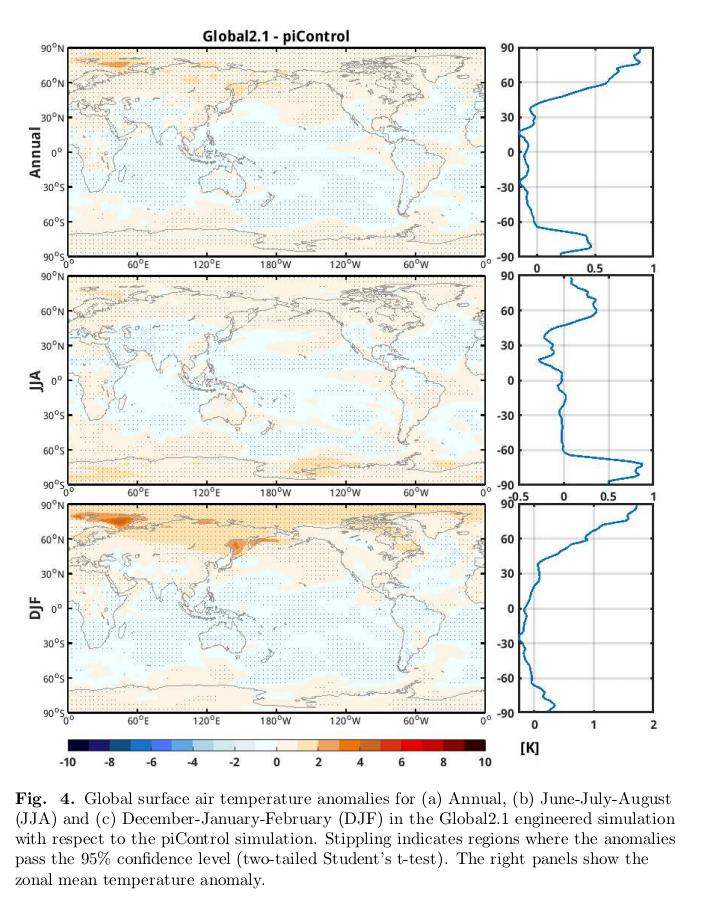✍️ 𝐖𝐞𝐞𝐤𝐥𝐲 𝐇𝐢𝐠𝐡𝐥𝐢𝐠𝐡𝐭𝐬 ✍️
Top #SolarGeoengineering News /Scientific papers from the past week covered in a 🧵below: ⬇️
1/7
Top #SolarGeoengineering News /Scientific papers from the past week covered in a 🧵below: ⬇️
1/7

1️⃣ ✍️ "DMF @DegreesNGO scientists respond to NYT opinion piece on #SolarRadiationManagement."
📜Find NYT opinion piece here ⬇️
nytimes.com/2023/04/18/opi…
📜Find DMF scientists response here ⬇️
2/7
📜Find NYT opinion piece here ⬇️
nytimes.com/2023/04/18/opi…
📜Find DMF scientists response here ⬇️
https://twitter.com/DegreesNGO/status/1656321910148349952?t=rUmBVzSFYE8bXGVX8rFGTg&s=19
2/7
2️⃣📝 A recent preprint published in @researchsquare journal reveal that, "#SolarShading could be an effective way to stabilize the #polar cryosphere. However, it has a strong impact on the hydrological cycle."
🎙️🔊➡️
📝📖➡️
3/7
🎙️🔊➡️
https://twitter.com/geoengineering1/status/1657460112510922753?t=AU8E6koU1nnkwVsl9x30bg&s=19
📝📖➡️
https://twitter.com/geoengineering1/status/1657458729481039873?t=nGo2M8jiewHsyzCVUxbIfw&s=19
3/7
3️⃣ "The rate of permafrost thaw begins to stabilize under #SAI, but does not fully stop, likely due to deep permafrost thaw processes that are resistant to surface temp changes," new study declared.
🎙️🔊➡️
📝📖➡️
4/7
🎙️🔊➡️
https://twitter.com/geoengineering1/status/1657099117301207040?t=8HntzlcmX4O8rQ52Em_XQA&s=19
📝📖➡️
https://twitter.com/geoengineering1/status/1657093586503241728?t=YrruszYbTGQvmfLEKOGFVQ&s=19
4/7
4️⃣ Drawing on previous #SlipperySlope literature & mechanisms of change from range of disciplines, a new study provides "a #typology of Slippery Slopes for application to stratospheric aerosol injection and other emerging #technologies."
📝📖➡️
5/7
📝📖➡️
https://twitter.com/geoengineering1/status/1650925771672657924?t=ZDbCsDNZ_KAdtLi61z2yDA&s=19
5/7
5️⃣ 📝 A research funded by Department of Science & Tech, GoI, quantified "the tropical monsoon precipitation changes in terms of interhemispheric differences in #StratosphericSulfateAerosol optical depth."
🎙️🔊➡️
📝📖➡️
6/7
🎙️🔊➡️
https://twitter.com/geoengineering1/status/1654257800120344576?t=1I7RdqKUhpK7Y5twlWE56w&s=19
📝📖➡️
https://twitter.com/geoengineering1/status/1654256814739922944?t=foE61iqON05GnZTY9sxr5g&s=19
6/7
• • •
Missing some Tweet in this thread? You can try to
force a refresh

 Read on Twitter
Read on Twitter





















